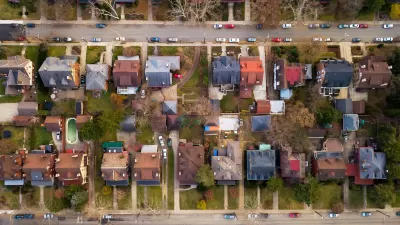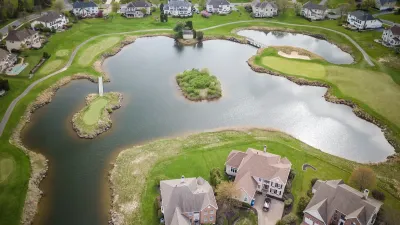A state law known as the Mount Laurel Doctrine mandates that each jurisdiction accommodate enough new housing units to meet the local demand for affordable housing.

In an article for the Morristown Daily Record, William Westhoven describes the tension between some New Jersey suburbs and the state government, which is calling on each local jurisdiction to accommodate enough housing production to meet demand and lower the cost of housing through its Mount Laurel Doctrine, a 1975 law strengthened by 2015 legislation. The doctrine is designed to ease zoning regulations that bar high-density housing.
The state’s Department of Community Affairs is calling for 85,000 new housing units, mostly in the northern part of the state. Some local officials, such as Parsippany Mayor James Barberio, say the push more higher-density housing could strain local infrastructure and budgets and force cities to “sacrifice quality for quantity.”
While some cities are fighting the mandates, others are building hundreds of units of new housing. According to the Fair Share Housing Center, “Since the reinvigoration of Mount Laurel enforcement in 2015, the rate of affordable housing production has nearly doubled.”
According to the DCA, their numbers are non-binding, and “Towns can present their own calculations or challenge the agency's determination based on issues including sewer capacity, slope angles on open space or other environmental concerns. Additional credits can be obtained for certain housing categories including group homes for individuals with disabilities.”
FULL STORY: NJ unveils new affordable housing obligations. How much does your town have to build?

Americans May Be Stuck — But Why?
Americans are moving a lot less than they once did, and that is a problem. While Yoni Applebaum, in his highly-publicized article Stuck, gets the reasons badly wrong, it's still important to ask: why are we moving so much less than before?

Using Old Oil and Gas Wells for Green Energy Storage
Penn State researchers have found that repurposing abandoned oil and gas wells for geothermal-assisted compressed-air energy storage can boost efficiency, reduce environmental risks, and support clean energy and job transitions.

Placekeeping: Setting a New Precedent for City Planners
How a preservation-based approach to redevelopment and urban design can prevent displacement and honor legacy communities.

San Francisco’s Muni Ridership Grew in 2024
The system saw its highest ridership since before the Covid-19 pandemic, but faces a severe budget shortage in the coming year.

Colorado Lawmakers Move to Protect BRT Funding
In the face of potential federal funding cuts, CDOT leaders reasserted their commitment to planned bus rapid transit projects.

Safe Streets Funding in Jeopardy
The Trump administration is specifically targeting bike infrastructure and other road safety projects in its funding cuts.
Urban Design for Planners 1: Software Tools
This six-course series explores essential urban design concepts using open source software and equips planners with the tools they need to participate fully in the urban design process.
Planning for Universal Design
Learn the tools for implementing Universal Design in planning regulations.
Heyer Gruel & Associates PA
City of Moreno Valley
Institute for Housing and Urban Development Studies (IHS)
City of Grandview
Harvard GSD Executive Education
Salt Lake City
NYU Wagner Graduate School of Public Service
City of Cambridge, Maryland





























